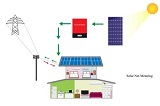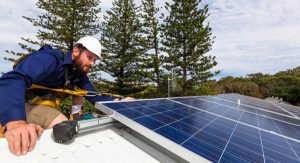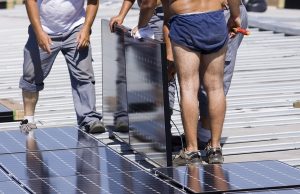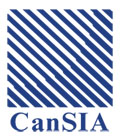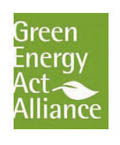Solar energy is surging in popularity throughout Canada. However, not everyone who wants to use renewable energy can install solar panels. These people include renters, people who cannot afford to upgrade to solar energy and people whose houses are too shaded to allow them to benefit from the technology.
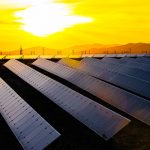
What Is Virtual Net Metering?
Virtual net metering, or VNM, is an essential component of community solar energy, which is a system that allows people to get solar energy, even if their financial or structural limitations that prevent them from installing their own panels.
Community solar customers join a community co-op that supplies each of its members with a portion of their electrical needs. These customers buy into the system so they virtually “own” either a few panels of the installation’s PV array, or a percentage of the energy the system produces.
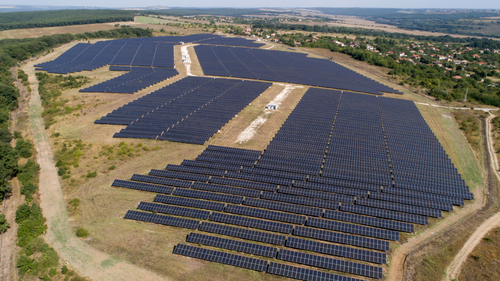
Virtual Net Metering – Solar Farm
Through VNM, customers in the co-op receive credit on their monthly energy bills for the shared solar energy the PV system contributes to the grid. For billing purposes, it’s as though they are receiving a discount on their electricity.
Customers don’t necessarily use the energy the shared solar array generates. They may just be helping support the adoption of green energy overall by allowing more solar energy to be part of the overall grid. One way to think about it is that the members of the co-op are using “virtual” solar and realizing savings in the form of discounted electricity bills, which have been reduced by applying credits that reflect the energy production of the shared solar installation.
How Consumers Benefit From VNM
Community solar and VNM would not be possible without inclusivity. These solutions level the playing field and allow everyone who wants a chance to be part of the green energy movement to participate, even people who can’t install solar energy because they rent their property, because they have financial restrictions or because their homes do not make it practical for them to install solar panels.
Along with opening solar opportunities to a wider number of customers, VNM provides participants with savings on their energy bills and more affordable solar energy, and it’s easy to use, as well.
How Utility Providers Benefit From VNM
Community solar installations benefit local energy companies by giving their customers the green power they desire. Shared solar installations represent an incentive for customers to remain loyal to their utility company, because the customers can see savings on their monthly bills without having to invest in private rooftop solar systems.
A community energy program and VNM help make utility providers more competitive because their users see that they are investing in a more progressive future. Other benefits include:
• Affordability
• Cleaner energy generation
• Better siting opportunities
• Possibility of greater grid coordination
CanSIA and VNM
The Canadian Solar Industries Association (CanSIA) – a national trade association that represents solar energy industry providers across the country – is working to make solar not only a mainstream energy source, but an essential component of Canada’s expanded energy mix by 2020. Within a similar timeframe, CanSIA also intends to advance the solar energy industry to a point where it is not only sustainable, but has plenty of support from the policy and regulatory environments, as well.
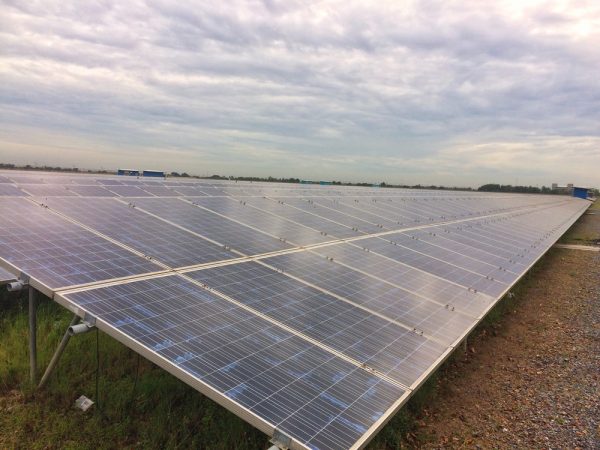
Remote solar panels installation in Ontario
Canada’s Ministry of Energy and the Independent Electricity System Operator (IESO) in Ontario have announced they are progressing with the development of VNM demonstration projects that will allow more consumers to be part of Canada’s green energy revolution – a decision CanSIA supports.
The focus of the VNM demonstration projects is to gain practical knowledge that will lead to the development of permanent VNM policies and regulations. Therefore, CanSIA is hopeful that the IESO will approve a broad range of Virtual Net Metering projects in Ontario. CanSIA also further suggests that the Ministry of Energy and the IESO develop a fully realized plan and defined timeline to identify how they will use the information from the demonstration phase to implement permanent VNM policies and regulations to benefit energy consumers and providers nationwide.




